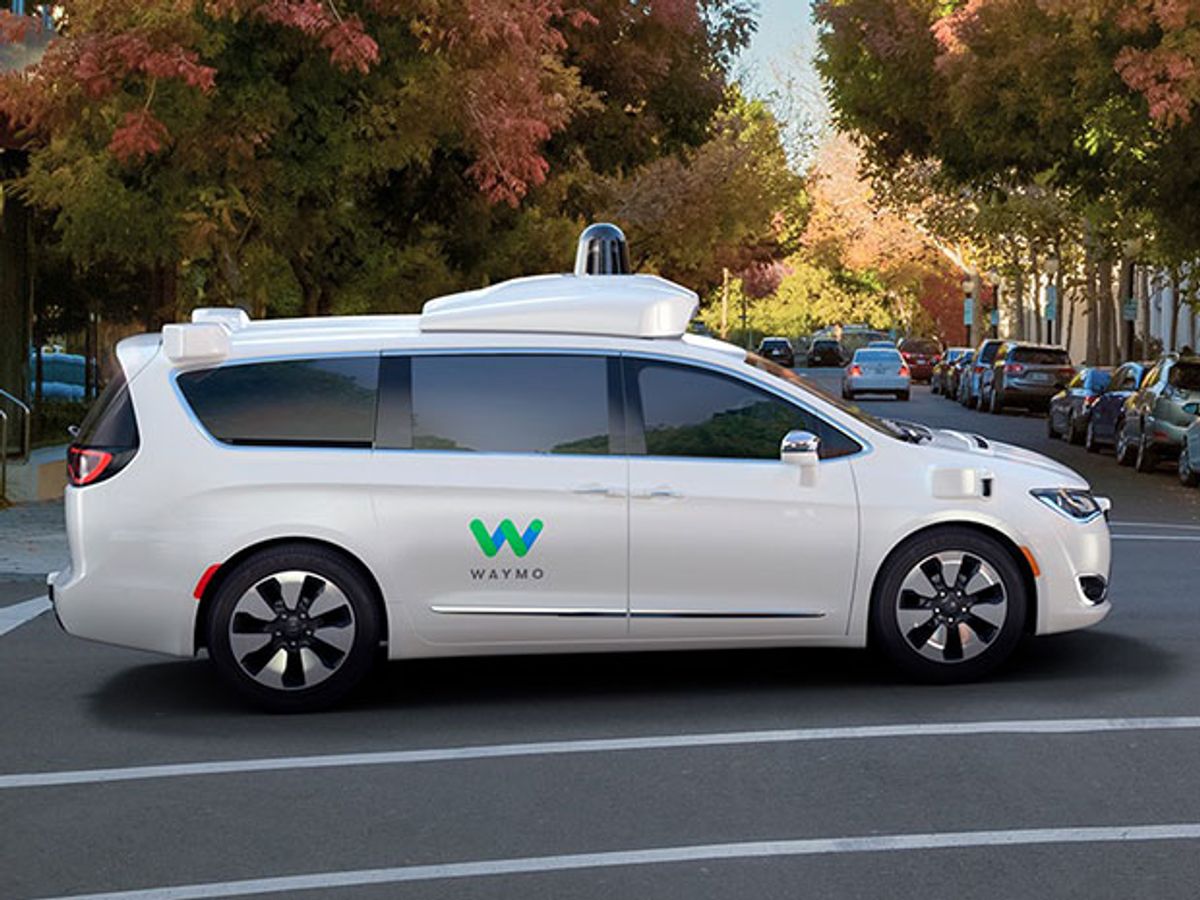Waymo, the robocar spinoff of Alphabet, has finally taken the veil off a self-driving system loaded to the gills with sensors designed in house. And that’s the key point, said Waymo CEO John Krafcik yesterday at the Detroit Auto Show.
“It was the eminently-quotable computer scientist Alan Kay who said, ‘people who are really serious about software should make their own hardware,’ ” Krafcik said. Beside him on the stage next stood a self-driving hybrid minivan from Fiat Chrysler equipped with Waymo’s technology. Krafcik said the minivans would hit public roads in California and Arizona later this month.
The Kay quote was revealing: Kay pioneered graphical interfaces at Xerox PARC’s fabled idea factory in the 1970s, and much of that work was later embodied in the Apple MacIntosh. As Krafcik noted, the Apple design philosophy has famously emphasized maintaining control over hardware as well as software. There’s no better way to defend an invention’s status as a premium product, commanding correspondingly fat profit margins.
The Waymo sensors are divided among several categories:
Three lidar sets cover short, medium and long distances, using lasers to estimate distances and put detected objects into detailed, three-dimensional maps. The particular advantage of lidar is in its ability to judge distances.
The existing rooftop tower contains the medium distance sensor that scans a full 360 degrees around the car; years ago, when Waymo was known as the Google Car project, this sensor was supplied by Velodyne for some US $75,000 apiece. Krafcik said Waymo’s own lidars all cost just 10 percent as much. (Velodyne has also lowered its prices in the meantime.)
A short-range lidar covers areas beside the minivan that would otherwise have been in the shadow of the rooftop sensor. And a long-range lidar, which Krafcik said was the first of its kind, works with the rooftop device to improve resolution.
“Imagine being able to see a football helmet, but two full football fields away,” he said.
Eight vision modules—cameras, essentially—exploit this technology’s ability to recognize shapes; they cover the entire area around the car, along with a ninth module that faces forward and provides extra resolution.
“We can detect small objects, like construction cones, far away, even when we’re cruising down a road at high speed,” Krafcik said. “And with a wide dynamic range we can see in a dark parking lot, or out in the blazing sun, or any condition in between.”
Radars are also salted around the car to give a similar theater-in-the-round effect. Radar is the one sensor that sees easily through fog, rain and snow.
“Conventional radars have also been designed to focus solely on vehicle movements. However, our fully self-driving cars need to safely navigate around all road users, from cars to pedestrians to cyclists,” he said. “So, we’ve configured our radars so that they’re much more sensitive to these slower moving objects.”
Exactly how much of Waymo’s self-driving prowess comes from such hardware—rather than improved software and road mapping—isn’t clear. Krafcik did say that there’s been a significant decline in the need to “disengage,” the word Waymo uses to describe what the human minder does when he takes back the wheel from a car that’s gotten into difficulties.
“In 2016, even as we drove hundreds of thousands more miles, our rate of disengages per thousand fell, from 0.8 in 2015 to 0.2 today. That’s a four-time improvement in the performance of our self-driving systems in 12 months,” he said.
What role Fiat Chrysler is playing in the creation and testing of the vehicle is unclear. What is clear is that Waymo wants to supply the entire auto industry with packages that can be fitted to just about any vehicle. Honda has recently shown interest in just that possibility.
Other carmakers, however, have opted to partner with another tech supplier—as Audi has done, with Nvidia—bought tech firms themselves, as General Motors did last year, with its $1 billion acquisition of Cruise Automation, and generally to develop the main parts of a robocar themselves, as Ford and Daimler are doing.
Waymo, in imitating Apple’s policy of seamlessly integrating hardware and software, may hope to thus reap some of Apple’s margins. Steve Jobs famously retained tight control in order to provent his company’s products from degenerating into mere commodities. And commodification is the main threat that roboticization holds for the auto industry right now.
Philip E. Ross is a senior editor at IEEE Spectrum. His interests include transportation, energy storage, AI, and the economic aspects of technology. He has a master's degree in international affairs from Columbia University and another, in journalism, from the University of Michigan.



